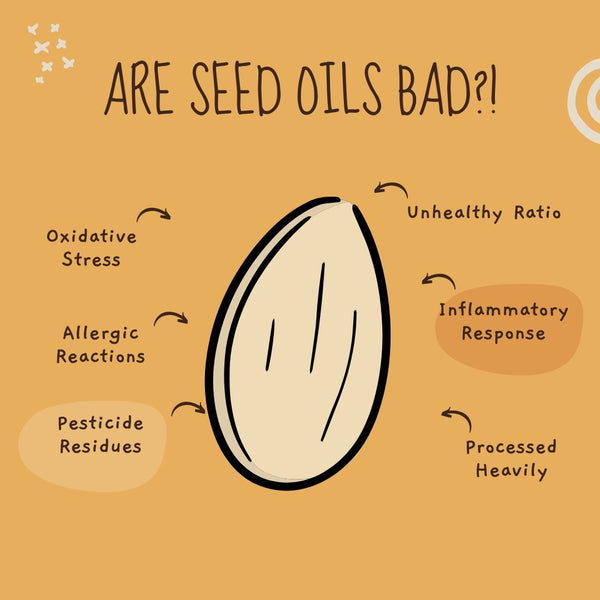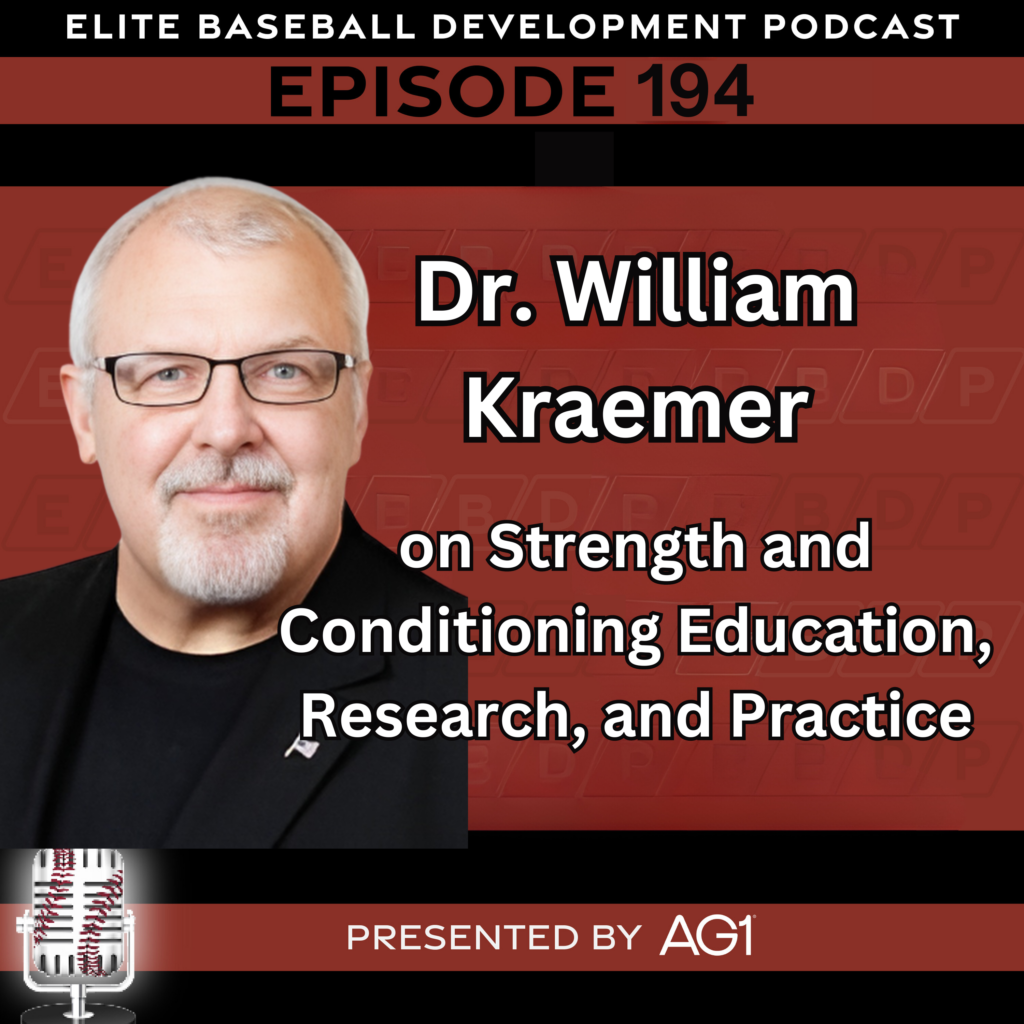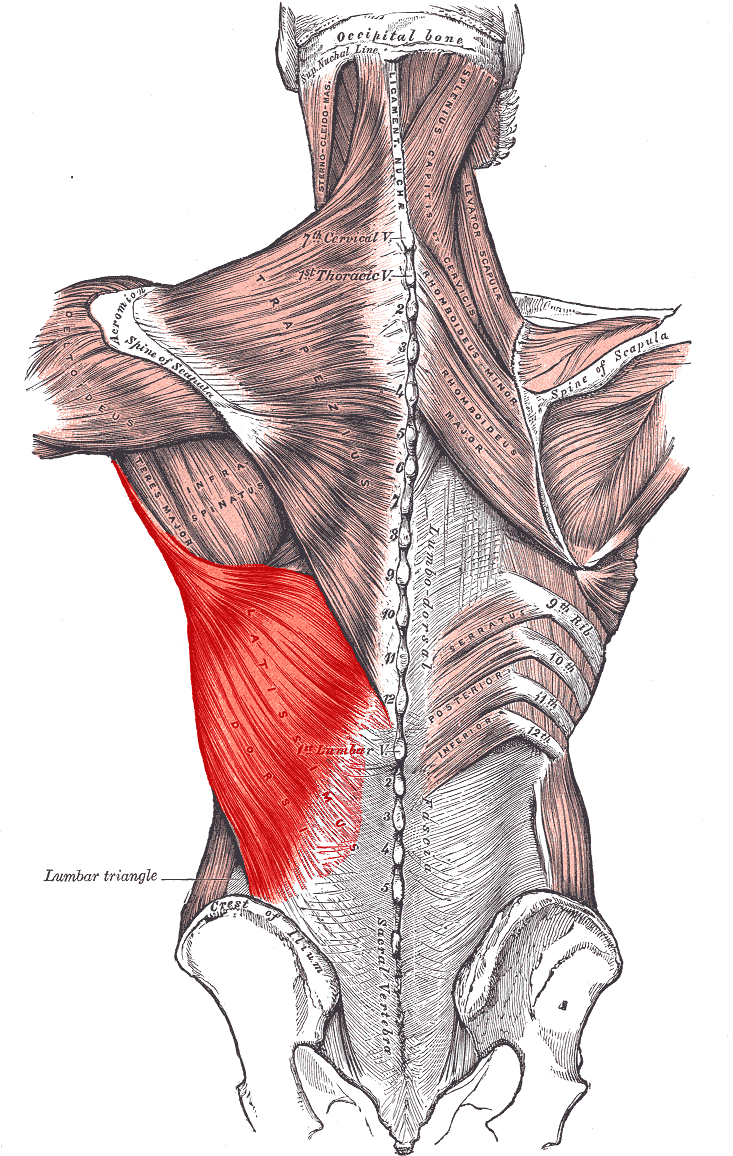Have you been checking the ingredient list of your favorite foods for seed oils? If you’ve been on social media lately, there’s a good chance you’ve come upon a post urging you to or else suffer the consequences.
Seed oils are the new bogeyman in the nutrition world and have been blamed for everything from cancer to weight gain. In fact, some have even suggested that seed oils are responsible for diabetes!
Are these concerns warranted? More importantly, are seed oils going to make you fat even though you’re doing everything right?
This article will try to help break down the controversy surrounding seed oils, as there’s always some truth to these claims. I’ll look at some claims and studies but I’ll also step back and look at the big picture with some rational observations. Regardless, let’s find out if seed oils make you fat or sick.
What Are Seed Oils?
I first need to clearly define seed oils, as you won’t go to a supermarket and find them sold as “seed oils”.
Many seed oils are generically referred to as “vegetable oils” in the same way many people will refer to soda as “coke.” However, this isn’t the best definition.
Seed oils are oils derived from the seeds of plants, including vegetables and fruits. The primary distinction is “seed,” as this dictates the processing involved in extracting the oil and its different characteristics.
There are 8 seed oils commonly labeled the “Toxic 8” by the anti-seed oil crowd. These oils are:
- Canola oil (aka rapeseed oil)
- Corn oil
- Cottonseed
- Grapeseed oil
- Soybean oil
- Sunflower oil
- Safflower oil
- Rice bran oil
- Peanut oil
The most common one seen in the West is canola oil. However, this can differ region by region. For example, peanut oil is very common in Asian countries such as China and Thailand.
Increase In Oil Consumption
One thing that is very true concerning seed oils and our diet is that their consumption has increased dramatically. We have actually been using seed oils for more than a hundred years, except in the beginning, they played a minor role in our foods. For example in 1909, soybean oil made up 0.006% of our calories. However, in 1999, it made up 7.38% of our calories which is a 123,810% increase 1!
That’s obviously a lot and this does have implications for your health. In fact, it even plays a role in weight gain – just not the way you think. I’ll get into that later.
How Are Seed Oils Made?
Part of the proposed problem with seed oils comes from how they’re processed. Different seeds undergo slightly different processes, but the first step is extracting the oil. This could be done through various processes such as cold-pressing, expeller-pressing, and solvent extraction.
From there, it goes through further processing and refining processes, including bleaching and deodorizing. This process can alter the oil’s chemical structure to lengthen shelf life. However, it also removes various nutrients such as Vitamin E and Phenols.
“Why Are Seed Oils Bad?”
Oh boy. Here we go.
Answering the question, “Why are seed oils bad?” automatically assumes that seed oils are bad. There is way too much nuance to give that blanket description.
Putting that caveat aside, there is more than one reason that people will claim that seed oils are bad. However, we can break down the concerns into 5 main issues and after looking at them, some are definitely more of a concern than others.
At the same time, I’ll also provide some arguments that refute these claims or at least attempt to shed some light on them from the other point of view.
Keep in mind that this could go on all day. You can easily find arguments and rebuttals to those arguments and rebuttals to those arguments and rebuttals to those — you get the idea. I just want to provide a better idea of what these concerns are.
High Levels Of Omega-6
One issue with consuming excess seed oils is that they contain high levels of omega-6, a poly-unsaturated fat. High levels of omega-6 are inflammatory and can result in various health issues.
However, it’s also important to point out the role of omega-3. Omega-3 is another poly-unsaturated fat that is usually talked about in a ratio to omega-6. Omega-3 is found in things like fatty fish, and it’s suggested that during ancestral times, we ate a diet that consisted of a ratio of 1:2-3 for omega-3 to omega-62.
However, due to our diet (low in omega-3 and high in omega-6), this ratio is somewhere between 1:10 and 15! The issue with this is that omega-3 actually has anti-inflammatory properties, and when eaten in a proper ratio, omega-3 balances out omega-6. However, due to our modern diet, this isn’t the case anymore, so the inflammatory properties of omega-6 outweigh the anti-inflammatory properties of omega-3.
While true, this could also mean we just need to eat more omega-3. I’m sure you have probably heard the advice to eat fatty fish twice a week. Well, this is why.
In addition to increasing your omega-3 intake, it probably isn’t a bad idea to decrease your intake of omega-6. While most people’s total calories contain around 6-7% of linoleic acid (omega-6), it should be closer to 1-2%3.
Related: Best Omega-3 Supplement
High Smoke Point And Oxidation
Another concern with a grain of truth concerns the high smoke point of seed oils. When heated for long periods of time, the structure can be altered, creating inflammatory compounds. While this is true,, there’s some nuance to consider.
In a study evaluating the oxidative stability of various cooking oils, canola oil was heated to 464°F for 20 minutes4. This resulted in a total polar compound level of 27.5%, which exceeded the allowable limit of 25% for human consumption.
However, when canola oil was heated to around 356°F, typical of medium to medium-high stove temperatures, it showed a total polar compound level of 7% after 20 minutes. Even after 6 hours at this temperature, the total polar compound level remained below the permissible limit at 17%.
It’s also important to note that canola oil is unique among seed oils as it has a lower omega-6 to omega-3 ratio. However, omega-3 is actually more prone to oxidation. On a side-note, it’s interesting that you never hear this from those against seed oils.
Something else to consider is that other non-seed oils tested did not surpass permissible limits after 20 minutes. Coconut and extra virgin olive oil had total polar compound levels of about 10% after 6 hours.
Regardless, think about what type of food is cooked in oil that is heated to high degrees for 20 minutes: deep-fried food. This is terribly different from using some oil to saute some vegetables and no one thinks you should be eating deep fried foods.
This reminds us of when vegans use foods like bacon cheeseburgers and pepperoni pizza as proof that eating meat is unhealthy for you. Noone says you should be eating these and it doesn’t “prove” that eating meat is bad for you. It proves eating unhealthy is unhealthy for you.
Related: 16 Veggie Protein Foods
Linoleic Acid Is Converted To Inflammatory Compounds
Linoleic acid is one of the primary omega-6 fatty acids most highly concentrated in seed oils. However, linoleic acid is converted to another fatty acid known as arachidonic acid within the body.
Arachidonic acid is said to be involved in synthesizing several bioactive compounds. Now, naysayers will say it helps form proinflammatory compounds, which is true. However, they neglect to say it also helps form anti-inflammatory compounds.
Regardless, the claim that linoleic acid is converted into arachidonic acid seems to be over exaggerated. A meta-analysis from 2011 showed that even when linoleic acid is increased in someone’s diet, it does not alter the amount of arachidonic acid found in the body5. In other words, it seems that the amount of linoleic acid does not directly affect the amount of arachidonic acid. Rather, there is a threshold, and the body maintains a constant amount.
It’s also interesting to point out that when calories are controlled, swapping out other fats with seed oils don’t seem to have any ill effect.
For example, one study replaced saturated fat with seed oils at a 1:1 ratio6. What they found was that the diets with the replaced seed oils actually had lower markers for inflammation.
The Processing Causes Various Toxins
As mentioned in the beginning, seed oils undergo heavy processing. Part of this process uses a solvent called hexane to extract the oil. In addition to processing seed oils, hexane is used in various other functions, such as a solvent for glues and a cleaning agent. I’ll be honest, that doesn’t sound particularly healthy.
Many claim that as it’s used in processing seed oils, leftovers remain in the oil, meaning we consume them. This isn’t good as high amounts of exposure can result in things such as7:
- Headache
- Muscle weakness
- Vertigo
- Blurred vision
- Nausea
While some leftovers may exist, reports claim they are microscopic at less than 1 ppm, which is less than the amount you breathe in while pumping your car. With that said, we would rather this not even be an issue, but it doesn’t seem to be the poison many claim it to be.
Formation Of Trans Fats
You have probably heard of trans fats, but do you know that they aren’t natural? Well, at least some? There are two types of trans fats. The first are naturally occurring trans fats found in animal products. These are generally thought to be healthy, with CLA (conjugated linoleic acid) being one of the more commonly known8.
However, the second type isn’t natural and isn’t healthy. The second type of trans fat is unnatural and is created when hydrogen is added to vegetable oils to increase their shelf life.
Tran fats are definitely not great for you. Studies have shown an association between trans fat intake and coronary heart disease and all-cause mortality9. However, its association with diabetes is unclear, even though the anti-seed oil claim it definitely is.
Either way, the FDA has dealt with this issue. A major source of trans fats is Partially Hydrogenated Oils (PHO). In 2015, these were no longer considered “generally recognized as safe (GRAS)10.”
Then, in 2020, their use was banned, and U.S. food manufacturers would no longer be allowed to sell foods containing partially hydrogenated oil. That effectively banned trans fats from being added to foods made or sold in the United States.
Now there is some wiggle room so it doesn’t cut out trans fats by 100% but it’s not the issue it used to be.
The Problems With Saying Seed Oils Are Bad
So now, let’s look at some issues with taking these ideas at face value.
Before I get into it, I want to say that I’m going to try to use more rational thinking rather than go into the nitty gritty of research. I will tell you that if you take any of these claims, you can find experts going back and forth, citing research and studies and using words you don’t understand.
Therefore, here are some observations to consider.
Seed Oils Are One Of Many Scares Throughout History
The most glaring issue with “seed oils are bad” is that this just falls in line with a forever-changing list of foods that will kill you. As far back as you can go, you can find periods of time when a single food was picked to cause all our health problems.
Some of these include:
- Fat as a whole
- Carbs as a whole
- Saturated fat
- Cholesterol
- Red meat
- Refined carbs
- Eggs
- Dairy
- Gluten
- Sugar
- Added sugar
- Fruit
Now, some of these are more demonized than others and some claims have more validity. However, all of these have had, or still have, people warning against their intake. At the same time, many “health experts” have reversed their thoughts on them.
Really, think about what this means. It means that at various times, people were eating things that were “healthy” and avoiding foods that were “unhealthy” only to have them swapped a few years later. However, you can find people during both periods claiming how their diet has helped them so much and has made them “feel” so much better.
It’s important to note that the anti-seed oil movement originated from the carnivore diet, with Paul Saladino being a huge proponent (he’s the guy walking around grocery stores without a shirt). His entire business and lifestyle are centered around the carnivore diet, so demonizing seed oils does have a benefit.
It’s unfair to say that anyone who benefits from a claim is biased and misleading. That would mean anyone telling you how important protein is for muscle growth isn’t telling the truth because they sell protein. However, these highly restrictive diets have a habit of making extreme claims as part of their marketing to push their diets.
Another thing to keep in mind is that at the same time seed oils are being demonized, there has been a drastic increase in perfectly healthy people monitoring their glucose levels as that too is the devil. Literally everything is demonized by someone – even bananas!
The Body Is Highly Complex
A major issue with many studies showing the harmful effects of seed oils is that they isolate these singular mechanisms. By this, I mean they take one reaction that could be deemed as negative and conclude that this dictates the total outcome.
In reality, the body is much more complicated than you could imagine. For example, you would probably agree that muscle protein breakdown is bad. Who wants that? In fact, you’d probably do whatever you can to minimize protein breakdown, right? Well, you should stop lifting weights cause it increases muscle protein breakdown!
It’s not hard to find a a study that shows resistance training increases cortisol, like this one11. If you took that at face value, you would have to assume resistance training causes a breakdown in your muscle. Obviously this isn’t the case as there are many other things going on.
This is also true for seed oils. For example, the study that replaced saturated fats with poly-unsaturated fats showed either no change in inflammation or an actual decrease even though there are mechanistic studies that show linoleic acid can trigger inflammation.
The point is that hundreds of mechanisms occur at any given time, and the primary concern is the total outcome when all things are managed.
Correlation Vs. Causation
Many will say this is an easy way to dismiss outcomes. While it’s true that you could use this inappropriately, it tends to occur frequently among the anti-seed oil crowd.
For example, claiming a correlation between increased seed oil consumption and obesity or diabetes. This is true. Graphs show that the increase in seed oils occurs with obesity and diabetes.
However, overall calorie consumption has also gone up while physical activity has gone down as well. Unless a graph shows this also occurs when calories are controlled and physical activity is up, it’s just a side note.
Cutting Out Seed Oils Cuts Out Processed Foods
Another example of this outrage is seen with all the anecdotal evidence you find online. There are a ton of people who reportedly cut out seed oils from their diet and saw amazing results. I think they probably did.
But here’s the issue. The anti-seed oil crowd rightfully claims that seed oils are in everything at the grocery store; this is saying they’re in processed foods. Well, if you cut out eating seed oils, this likely means you cut out eating a lot of processed foods, which will automatically clean up your diet!
For example, you often hear French fries as an example of heating and oxidation. Okay, but who said eating French fries was healthy in the first place? Or you can find TikToks with a shirtless guy saying, “See, even these cookies have seed oils!” Again, they also have added sugar, and who suggested packaged cookies were healthy?
So yes, if you cut out cookies and french fries to cut out seed oils, you’re going to see a positive benefit.
One of the golden rules of nutrition is to limit, if not eliminate, your consumption of fried foods. In fact, limiting your intake of processed foods has always been a guiding principle. Now, it is true that seed oils are found in many products at the grocery store, including tortilla wraps and granola.
At the same time, I’m sure you see these same types of transformation when people have cut out carbs, cut out gluten, went on keto, went on carnivore, and so on. This harks back to the issue of seed oils being one of many scares. It’s not hard to find these claims that they go gluten-free or fasting. If the “seed oil” was the main culprit, you wouldn’t expect to hear success stories from every other diet.
People Have Lost Weight Never Knowing About Seed Oils
Here’s also something to consider. You hear that “seed oils” cause obesity and diabetes. If seed oils were the culprit, how have people lost weight for decades simply by controlling calories and exercising?
Hearing these claims makes it seem that you will gain weight simply because you eat seed oils. This is just silly. Overconsumption of calories causes obesity. Ask yourself, have you lost weight? If so, did you do it by cutting out seed oil or calories?
Control Your Calories, Increase Activity, Minimize Processed Foods
The main point is this. Getting caught up in all these diet scares can do your head in. At the end of the day, you need to control your calories and increase physical activity. Further, there may be some truth to the overconsumption of seed oils but this is synonymous with the overconsumption of processed foods. So yes, you should decrease your intake of processed foods and if cutting out seed oils helps you do that then there’s no harm.
Also, increase your daily activity. This is lost in all of this discussion and we are dying from a lack of physical activity as there is a clear association with increased activity and decreased mortality – that should be where your efforts are directed12.
One Truth: Seed Oils Will Make You Fat
So here we are, will seed oils make you fat? Well, kind-of.
Out of all this, one truth remains about seed oils: As mentioned they have drastically increased the total calories consumed. On average, Americans typically consume around 23% more calories today than they did in 197013. Of particular interest is that a large percentage of these extra calories comes from the extra seed oils.
This isn’t a surprise, as fast food intake has been frantically rising. It’s estimated that, on average, 11.3% of Americans’ diets come from fast food. However, this isn’t fair, as this is average, and many Americans don’t eat any fast food, while some eat it every day. For example, when it comes to children and adolescents, this is how calories from fast food can differ.
- 11.1% obtained less than 25% of calories from fast food
- 13.8% obtained 25%–45% of calories from fast food
- 11.4% obtained more than 45% of calories from fast food
So yes, there is a relationship with seed oils and rise in obesity but it’s most likely due to the increased calories.
Seed Oils: The Final Verdict?
Trying to find a conclusive answer will do your head in. However, I believe the simplest explanation is the best. Seed oils probably aren’t the best for you. It’s also true that our intake has risen dramatically over the years.
However, fast food and added sugar have also increased. All of this has led to an increase in caloric consumption, with seed oils being one of the main culprits. It’s also important to note that many of these seed oils come from heavily processed foods, which shouldn’t be part of your diet in any meaningful way. This is to say that if you follow a whole-food diet, these concerns will decrease. With that said, you can also increase your omega-3 intake and physical activity.
Now, if you do want an alternative oil, extra-virgin olive oil is the go-to oil and it’s actually one that pretty much everyone agrees with being healthy. In other words, you won’t have to worry about some guy on TikTok telling you olive oil is death in a bottle as you saute some mushrooms and onions for your steak.
Hungry? Check out our (free) Fitness-based Meal Plans
References:
- Blasbalg, T. L., Hibbeln, J. R., Ramsden, C. E., Majchrzak, S. F., & Rawlings, R. R. (2011). Changes in consumption of omega-3 and omega-6 fatty acids in the United States during the 20th century. The American Journal of Clinical Nutrition, 93(5), 950–962. https://doi.org/10.3945/ajcn.110.006643
- Simopoulos, A. P. (2001). Evolutionary aspects of diet and essential fatty acids. World Review of Nutrition and Dietetics, 88, 18–27. https://doi.org/10.1159/000059742
- Jandacek, R. J. (2017). Linoleic Acid: A Nutritional Quandary. Healthcare, 5(2), 25. https://doi.org/10.3390/healthcare5020025
- Alzaa, D. (2018). Evaluation of Chemical and Physical Changes in Different Commercial Oils during Heating. Acta Scientific Nutritional Health, 2. https://actascientific.com/ASNH/pdf/ASNH-02-0083.pdf
- ?Rett, B. S., & Whelan, J. (2011). Increasing dietary linoleic acid does not increase tissue arachidonic acid content in adults consuming Western-type diets: a systematic review. Nutrition & Metabolism, 8(1), 36. https://doi.org/10.1186/1743-7075-8-36
- Nydahl M;Gustafsson IB;Ohrvall M;Vessby B. (2015). Similar serum lipoprotein cholesterol concentrations in healthy subjects on diets enriched with rapeseed and with sunflower oil. European Journal of Clinical Nutrition, 48(2). https://pubmed.ncbi.nlm.nih.gov/8194494/
- Hexane. (2000). https://www.epa.gov/sites/default/files/2016-09/documents/hexane.pdf
- Pipoyan, D., Stepanyan, S., Stepanyan, S., Beglaryan, M., Costantini, L., Molinari, R., & Merendino, N. (2021). The Effect of Trans Fatty Acids on Human Health: Regulation and Consumption Patterns. Foods, 10(10), 2452. https://doi.org/10.3390/foods10102452
- de Souza, R. J., Mente, A., Maroleanu, A., Cozma, A. I., Ha, V., Kishibe, T., Uleryk, E., Budylowski, P., Schünemann, H., Beyene, J., & Anand, S. S. (2015). Intake of saturated and trans unsaturated fatty acids and risk of all cause mortality, cardiovascular disease, and type 2 diabetes: systematic review and meta-analysis of observational studies. BMJ, 351, h3978. https://doi.org/10.1136/bmj.h3978
- Center for Food Safety and Applied Nutrition. (2018). Final Determination Regarding Partially Hydrogenated Oils. U.S. Food and Drug Administration. https://www.fda.gov/food/food-additives-petitions/final-determination-regarding-partially-hydrogenated-oils-removing-trans-fat
- Santos, Brandão, J., Vitor Ayres Principe, Lúcio, M., Dirceu Ribeiro Gama, Rodolfo, Santos, Gomes, R., & Gustavo Casimiro Lopes. (2021). Effects of high-intense resistance training on salivary cortisol in trained individuals: a systematic review. Retos: Nuevas Tendencias En Educación Física, Deporte Y Recreación, 41, 265–271. https://dialnet.unirioja.es/descarga/articulo/7947386.pdf?
- Blond, K., Brinkløv, C. F., Ried-Larsen, M., Crippa, A., & Grøntved, A. (2019). Association of high amounts of physical activity with mortality risk: a systematic review and meta-analysis. British Journal of Sports Medicine, bjsports-2018-100393. https://doi.org/10.1136/bjsports-2018-100393
- Lee, J. H., Duster, M., Roberts, T., & Devinsky, O. (2022). United States Dietary Trends Since 1800: Lack of Association Between Saturated Fatty Acid Consumption and Non-communicable Diseases. Frontiers in Nutrition, 8. https://doi.org/10.3389/fnut.2021.748847



